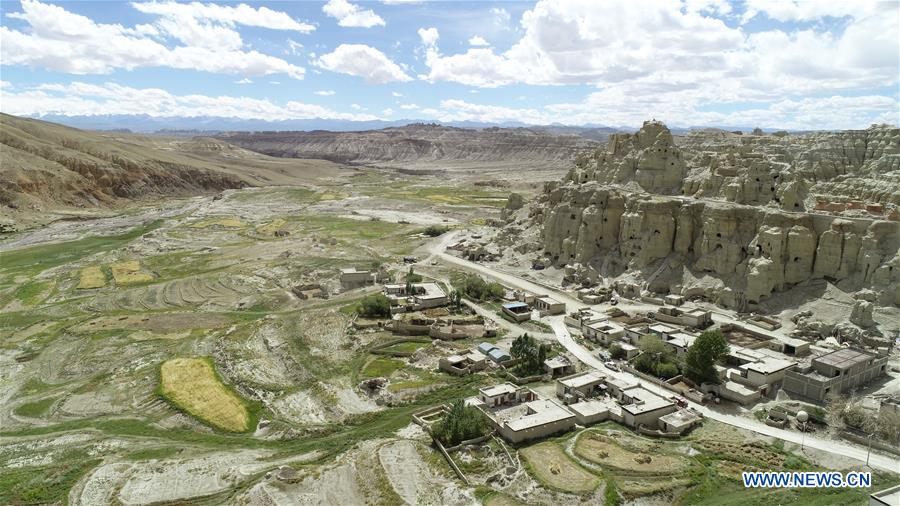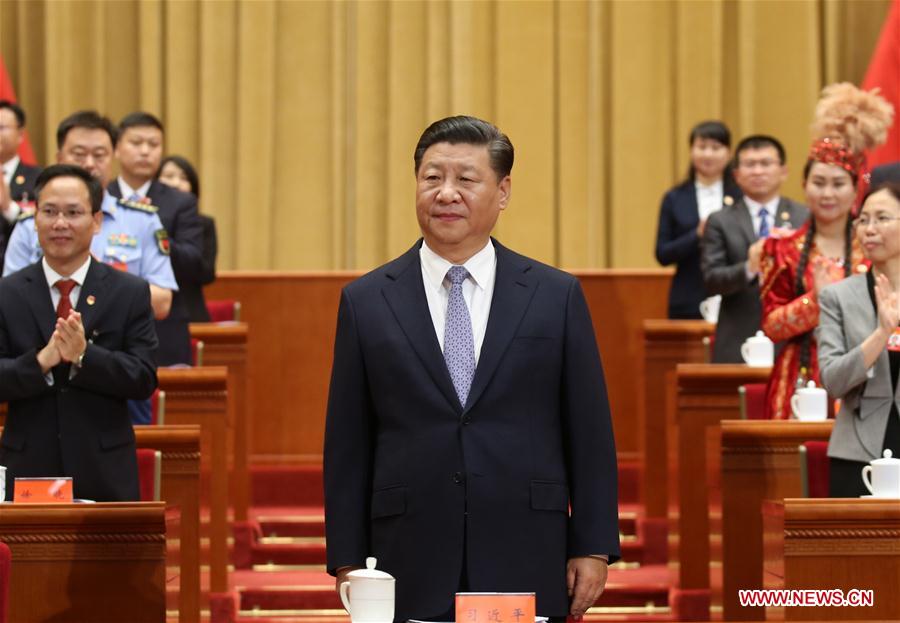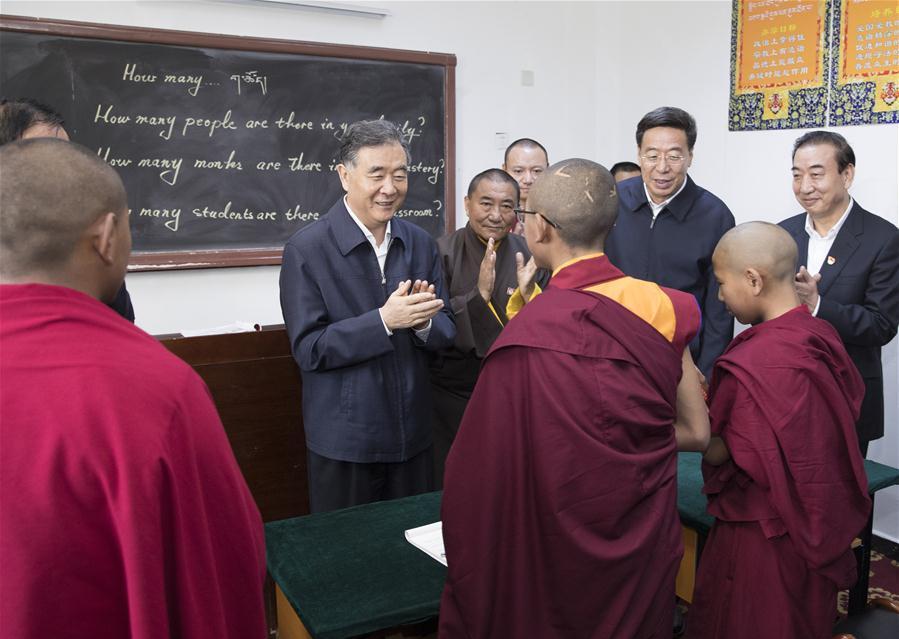Full text of Chinese premier's keynote speech at China-Netherlands Business Forum
THE HAGUE, Oct. 18 (Xinhua) -- Chinese Premier Li Keqiang delivered here on Tuesday a keynote speech at the China-Netherlands Business Forum.
The following is the full text of the keynote speech:
Keynote Speech by H.E. Li Keqiang
Premier of the State Council of the People's Republic of China
At the China-Netherlands Business Forum
The Hague, 16 October 2018
Prime Minister Mark Rutte,
Ladies and Gentlemen,
It is my great pleasure to join you at the China-Netherlands Business Forum in this beautiful city of The Hague. On behalf of the Chinese government, I wish to offer warm congratulations on the opening of the Forum and extend sincere thanks to people of all walks of life who have long been committed to the friendship and cooperation between China and the Kingdom of the Netherlands.
This year has seen many highlights in China-Netherlands relations. In February, President Xi Jinping met with His Majesty the King who visited China. The meeting provided further guidance to and boosted the growth of our bilateral ties. With the official visit to China by Prime Minister Mark Rutte in April and my visit to the Netherlands this time, we made an exchange of visits at the head-of-government level within a year. Such frequent high-level interactions have lent fresh impetus to our relations defined as an open and pragmatic partnership for comprehensive cooperation.
Being one of the earliest achievers of modernization, the Netherlands can be rightly proud of its accomplishments in many areas. It is the birthplace of the world's first share-holding company, first stock exchange and first modern bank. It boasts one of the world's highest per capita GDPs, and ranks as the fifth, the sixth, and the second largest exporter of goods, services and agriculture produce and food respectively. It is home to a great many well-known companies and brands, with half of its companies actively engaged in innovation. Just now I was given a presentation of some of the leading hi-tech products of this country, which left me deeply impressed by the scientific and technological prowess and industrial capabilities of the Netherlands.
Although our countries are far apart geographically, friendly interactions between our peoples go back centuries. As early as in the 17th century, Dutch merchants brought Chinese porcelain, tea and silk to Europe. Our cooperation has come a long way since the establishment of diplomatic ties, especially in recent years. The Netherlands has been among China's top three trading partners in the EU since the year 2000, with two-way trade projected to approach 90 billion U.S. dollars this year. We each have about 20 billion U.S. dollars of investment stock in the other's market. Eleven out of the 15 Dutch Fortune 500 companies have invested in China, and the Netherlands is now China's second largest investment destination in the EU.
We owe such fruitful economic ties to our shared adherence to the principles of mutual respect and equality, to our commitment to openness, inclusiveness and mutual benefit, and to our tireless pursuit of pragmatism, enterprise and innovation. With so many business leaders present, let me say the growth of trade and economic cooperation between our two countries is, to a large measure, down to the hard work and wisdom of our business communities.
Yesterday, I had productive talks with Prime Minister Rutte. We reached important common understanding in wide-ranging areas. Given the strong foundation, enormous potential and great prospect of our cooperation, there is every reason that we should redouble our efforts to further broaden, deepen and elevate China-Netherlands cooperation.
We need to make the pie of our trade bigger. As China-Netherlands trade only accounts for 1.5 percent of the combined trade volume of our two countries, there is considerable space for further expansion. China is keen to import more manufactured industrial products, advanced equipment and quality agricultural produce from the Netherlands. This will better meet the needs of Chinese consumers and be conducive to industrial upgrading in China. The first-ever China International Import Expo will open soon. We look forward to the active participation of Dutch companies to showcase your capabilities and I wish you hefty orders in advance. Chinese products offer good value for money; over 70 percent of Chinese exports to this country are through entrepot trade. I hope Dutch companies will fully capitalize on your strength as a transshipment hub to bring more Chinese products to the Dutch and the wider European markets. In view of the rapid growth in our trans-border e-commerce, it is high time we create better conditions, both in hardware facilities and the softer aspects, to give Chinese and Dutch consumers more choices and greater convenience.
We need to open up more space for two-way investment cooperation. China is ready to work with the Netherlands in creating a fair, non-discriminatory and transparent business environment for each other's investors. Dutch companies are welcome to expand their investment in China by leveraging the synergy between their leading-edge capabilities and China's huge market potential. In particular, I would encourage you to explore opportunities in China's central and western provinces as well as traditional industrial bases in the northeast, which hold enormous development potential. You are also welcome to invest in development zones, pilot free trade zones or free trade ports in China which offer enabling conditions. On our part, we hope the Netherlands, a nation long committed to a free and open investment policy, will give fair and equitable treatment to Chinese companies who make investments in this country according to market principles and commercial rules.
We need to strengthen cooperation on the Belt and Road Initiative (BRI). Having a long history of maritime trade has made the Netherlands a gateway to Europe. China is ready to work closely with the Netherlands in ports, logistics, customs and other fields to help build an efficient and smooth passageway between Asia and Europe. Companies of our two countries have been engaged in third-party cooperation on equipment supply, design and consulting. We need to further expand the areas and scope of such cooperation to deliver greater benefits to the local communities.
The BRI is an initiative for economic cooperation, not a tool of geopolitics. In carrying out BRI and third-party cooperation, we should follow market principles and prevailing international rules, and leverage the role of regional and international institutions. We should proceed from the national conditions of countries concerned and ensure transparency in project operation in order to keep the debt risks under control.
We need to cultivate new growth drivers in our cooperation on innovation. The people of our two countries are both known for being bold innovators. While the Netherlands has been a top-tier innovative country in the world, China has also implemented an innovation strategy in recent years to drive growth and fostered a culture of entrepreneurship and innovation across society. As the new round of industrial revolution gathers momentum, global industrial and innovation chains are becoming closely entwined. All countries are involved, to varying degrees, in this process, each contributing its share and drawing benefits in return.
The Chinese and Dutch governments have implemented three major cooperation programs on science, technology and innovation. We are ready to build on the existing foundation to upgrade cooperation in this field. We should enhance cooperation in human resource development, joint research and commercialization of research results, particularly in areas such as smart shipping, agriculture, water management, aviation and space, life sciences, electronic information, new materials, chemistry and environmental protection. Such cooperation, which draws on our complementarity, will generate more benefits than if we act alone.
Ladies and Gentlemen,
China-Netherlands cooperation is a fine example of China-Europe cooperation. The world today is undergoing profound changes. Yet no matter how the situation may evolve, China will always see Europe as an important pole in the world and the EU as a comprehensive strategic partner. China hopes to see the EU staying united, stable, open and prosperous. Given the growing uncertainties and destabilizing factors in the world economy, there is every reason for China and the EU, as two major economies, to enhance strategic communication and coordination, and respond to the challenges together.
We hope the EU will ease restrictions and increase the export of high-end equipment and high-tech products to China. We need to build on the progress in the negotiations of a bilateral investment agreement to push for substantive outcomes. A possible China-EU FTA would give a big boost to the growth of our economic and trade relations. We are ready to work with the EU to lay a solid foundation for the FTA by launching a joint feasibility study as early as possible.
To deepen China-Netherlands and China-EU cooperation, a free and open environment is indispensable. Yet, the rise of unilateralism and protectionism has dealt a blow to the multilateral trading regime. The rules-based multilateral trading regime, represented by the WTO, was built with long and hard efforts by all parties on the basis of learning the lessons of history. It has played an irreplaceable role in the global trading system. Trade among WTO members now accounts for more than 98 percent of global trade. China and the EU are both beneficiaries of the multilateral trading regime and advocates for upholding the authority and effectiveness of the WTO.
That being said, some of the WTO rules do need to be reformed and improved. China and the EU have established a joint working group for this purpose, which held its first dialogue not long ago. China maintains that the fundamental principles of the WTO, such as openness, transparency, inclusiveness and non-discrimination, should not be compromised. The direction of trade liberalization should continue to be followed. Reforms should accommodate the concerns of the majority of the membership, uphold the development rights and interests as well as the special and differential treatment of the developing members, and serve to narrow the gap between the North and the South. China supports fair trade as well as free trade. Without free trade, there will be no fair trade; trade that is unfair is simply unsustainable; be it free trade or fair trade, all trade should be based on universally recognized WTO rules.
Ladies and Gentlemen,
Through four decades of reform and opening-up, China has made significant economic progress. With China becoming the second largest economy in the world, some foreign friends started to wonder: is China still a developing country? To identify the development stage of a country, one needs to take a comprehensive and multi-dimensional view. China does have a huge economic aggregate, but its per capita GDP stands just above 8,800 U.S. dollars, only a quarter of that of the EU. More than 40 percent of Chinese live in the rural areas. Among them, over 30 million, equivalent to the population of a medium-sized country, are living in poverty with a per capita annual income of less than 3,000 RMB yuan. A large number of villages and some remote areas are still struggling with primitive infrastructure. Some of them have only just had access to roads, electricity and the internet. China ranks 86th on the UN list of Human Development Index, 76 places behind the Netherlands. All these speak to the fact that China remains a developing country, and there is still a long way to go before China becomes a high-income country and achieves all-round modernization.
On the other hand, the significant gap between China and developed countries can be turned into huge potential for development. The Chinese economy grew by 6.8 percent in the first half of this year. Growth in the third quarter is projected to moderate somewhat due to factors such as changes in the external environment. Yet we expect the steady momentum of growth to continue and overall economic performance to be maintained within the proper range. Employment, in particular, has remained solid, with over 11 million new urban jobs created in the first three quarters of this year. This has helped to keep surveyed urban unemployment rate at a relatively low level of around 5 percent. Structural adjustments have continued to make headway: consumption has kept growing by over 9 percent; the services sector accounts for a growing share of the economy, consolidating its role as the main engine for growth. High-tech sectors, strategic emerging industries and equipment manufacturing expanded notably faster than general industries. Agricultural production remains strong, with main agricultural products in abundant supply.
What's more, new growth drivers such as new forms and models of business have been thriving. The number of newly registered enterprises reached five million in the first three quarters of this year, or 18,000 for an average day, bringing the total number of market entities in China to over 100 million. These new growth drivers now contribute over one third to economic growth and more than two thirds to urban job creation. The quality and performance of the Chinese economy has been improving: profits of large industrial companies and service providers maintained double-digit growth, and household income rose largely in tandem with GDP growth.
This being said, we are deeply conscious of the many uncertainties and destabilizing factors confronting the Chinese economy in the context of a complex and fast-changing international environment. Downward pressure on the economy has notably increased, so have the difficulties and challenges facing us. Nevertheless, the Chinese economy enjoys strong resilience and broad space for maneuver, and thanks to years of development and innovation, we have at our disposal a fairly substantial toolkit for macro-control. All these will fully equip us to meet the main targets of development for this year and, through continued unrelenting efforts, to sustain medium-high growth for a long time to come and move to a medium-high level of development.
China will stay committed to advancing reform. Reform is the fundamental driver of China's development. China will only speed up its market-oriented reforms. We will not slow down the pace of reform, let alone turn back. The Chinese government will continue to streamline administrative approval procedures, provide more efficient services, and slash the time required to start a business, get a permit or go through customs clearance. We will introduce tax cuts on a bigger scale and meaningfully lower fees, including the social security contribution rate. The reform to transform state-owned enterprises (SOEs) into standard companies and joint-stock companies has been basically completed. China's SOEs, many of which are publicly listed, run their operations in an open and transparent manner. It is entirely up to them to make their own business decisions, and they are responsible for any profits or losses. They do not enjoy any special subsidies.
Continued efforts will be made to deepen the reform of SOEs and state-owned assets, including mixed-ownership reform in a tiered and category-based manner. Foreign investors are welcome to participate in the reforming and restructuring of Chinese SOEs. We will work for greater transparency in government regulations, ordinances and standards at all levels and higher consistency and predictability in policy execution. A level-playing field will be resolutely enforced. All companies registered in China will receive fair and equal treatment.
China will stay committed to greater opening-up. China has comprehensively fulfilled, in some cases outperformed, the commitments it made upon accession to the WTO. A foreign investment management model of pre-establishment national treatment and a negative list has been rolled out. China's trade in goods now accounts for more than one third of its GDP. And foreign-invested enterprises have contributed about 40 percent to China's export and 20 percent to tax revenue. China's economy has deeply integrated into the world economy. Pursuing greater opening-up is a sure choice based on its own development needs. Since early this year, we have introduced an array of new measures in pursuit of greater opening-up, including lowering tariffs for some goods and widening market access in the manufacturing and services industries.
Starting from next month, we will cut import tariffs for more than 1,500 industrial goods, which will bring our overall tariff rate down to 7.5 percent, a lower-middle level by international standards. China will further open its financial services sector. Just as we have lifted foreign ownership caps in the banking sector, we will take similar steps in the insurance and securities sectors in the next three years. By then there will be foreign ventures qualified for full-license, full-ownership operation in the financial sector. China's pursuit of opening-up in greater breadth and depth will provide more cooperation opportunities to the business communities around the world. In the first eight months of this year, total paid-in foreign direct investment in China grew by over 6 percent. A new round of investment by some multinationals is in the pipelines. Companies from the Netherlands and other European countries are welcome to get a head start in seizing business opportunities in China.
China will stay committed to boosting innovation. Much can be accomplished in China given its huge market, strong supporting industries and abundant human resources. We will foster a more enabling eco-system to spur innovation, intensify support for basic research and applied basic research, encourage corporate R&D spending, and improve incentives for researchers and policies for the commercialization of innovation outcomes. We will facilitate integrated innovation and synergized development of companies of different sizes, industries, universities, research institutes and end users in both online and offline activities.
Stringent IPR protection meets China's needs for high-quality development and closer cooperation with the rest of the world. In recent years, China has revised nearly 20 IPR-related laws and regulations, handled over 1.4 million cases of IPR infringement, and set up special IPR tribunals. Intellectual property royalty payments by Chinese companies to overseas proprietors have increased by a big margin to reach 28.6 billion U.S. dollars last year, of which one third was made to the EU. China will never allow forced technology transfer or make technology transfer a precondition for foreign investment approval. Mutually beneficial technology transfer and cooperation between business partners in joint ventures and other forms of cooperation will be respected by the government. We will introduce a more rigorous mechanism of punitive compensation for IPR infringements to deter violations, improve judicial services and align China's innovation protection system with international business rules.
Ladies and Gentlemen,
There is a proverb in the Netherlands that says, "A ship is as strong as its crew." If we compare China-Netherlands cooperation to a giant ship, business leaders present today would be sailors whose work is vital to the voyage ahead. I trust that all of you "sailors" will brave the waves hand-in-hand and forge ahead to set new records and score greater success in our cooperation.
Thank you.
Your Comment
Name E-mailRelated News
-
-

-
Rock inscription of Tibetan Buddhist texts found in Qinghai
Researchers in northwest China's Qinghai Province have found a Tibetan Buddhist rock inscription considered to be the largest and most well-preserved in the province, a local museum said Wednesday.
-
-
-
King of Norway to visit China
BEIJING,Oct.8(Xinhua)--KingofNorwayHaraldVwillpayastatevisittoChinafromOct.11to20attheinvitationofChinesePresidentXiJinping,ForeignMinistryspokespersonLuKangannouncedonMonday.
-
-
Large-scale tax cuts underway: Ministry of Finance
A large-scale tax reduction and more positive financial policies are underway, said Liu Kun, Minister of Finance of China, in a recent interview with Xinhua News Agency.
-
-

-
Scenery of Ngari area in China's Tibet
The Ngari area has an average altitude of over 4,000 meters above sea level.
-
-
-

-
View of Mount Kangrinboqe in SW China's Tibet
A view of 6,656-meter-high Mount Kangrinboqe, main peak of the Gangdise Range, in Pulan County of Ali Prefecture, southwest China's Tibet Autonomous Region.
-







